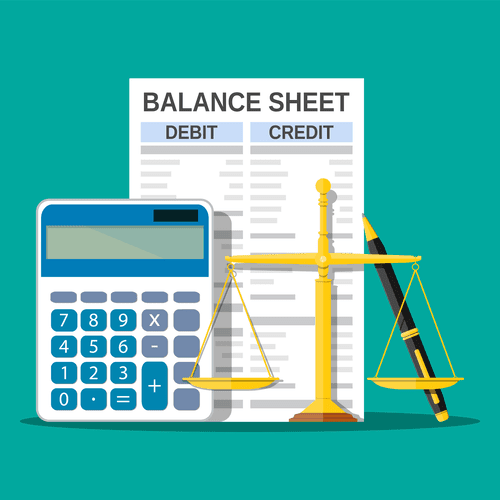Accounting for Notes Receivable Financial Accounting

Together, the principal and interest portions represent the note’s maturity value. The straight-line method is a simplified version, where we amortize the discount on a straight-line schedule throughout the term. Get $30 off your tax filing notes receivable in balance sheet job today and access an affordable, licensed Tax Professional. With a more secure, easy-to-use platform and an average Pro experience of 12 years, there’s no beating Taxfyle.

Notes Receivable: Statement of Financial Position/Balance Sheet

Entities that anticipate prepayments in applying the interest method shall disclose that policy and the significant assumptions underlying the prepayment estimates. We have an awesome example of how to do the calculations and journal entries, using each of the different methods, in our next article « Notes Receivable Calculations and Journal Entries ». Square determines the amount to be charged for the loan and the percentage to be charged each day using data analytics.
How does Square account for the amounts it loans to small businesses?

The articles and research support materials available on this site are educational and are not intended to be investment or tax advice. All such information is provided solely for convenience purposes only and all users thereof should be guided accordingly. For information pertaining to the registration status of 11 Financial, please contact the state securities regulators for those states in which 11 Financial maintains a registration filing. Essentially, in all these situations, the company that owns the receivable either sells it to the bank (or another lender) or borrows against it to obtain immediate cash.
- If a note is impaired, the loss is measured as the difference between the carrying amount of the note and the present value of expected future cash flows, discounted at the note’s original effective interest rate.
- To show the initial recording of notes receivable, assume that on 1 July, the Fenton Company accepts a $2,000, 12%, 4-month note receivable from the Zoe Company in settlement of an open account receivable.
- The principal value of the note is $ 500,000, $125,000 of which will be paid monthly for four months (time frame) along with the agreed annual interest rate of 10% (stated interest).
- The bank accepts the note and gives the holder cash equal to its maturity value less a discount to the maturity value computed using a discount rate.
- Set your business up for success with our free small business tax calculator.
- The amount of payment to be made, as listed in the terms of the note, is the principal.
- Our work has been directly cited by organizations including Entrepreneur, Business Insider, Investopedia, Forbes, CNBC, and many others.
Subscribe to Taxfyle
- Explore the intricacies of notes receivable, from initial recognition to liquidity analysis, to enhance your financial reporting accuracy.
- The effective interest rate is the rate that exactly discounts the expected stream of future cash payments through the life of the note receivable to the net carrying amount of the financial asset.
- With a promissory note, the third party who issued the note (called the maker) promises in writing, to pay an amount of money (principal and interest) to the business (called the payee) at a given time or on demand.
- All information prepared on this site is for informational purposes only, and should not be relied on for legal, tax or accounting advice.
- The duration of notes receivable is the length of the time that notes are outstanding or the number of days called for by the notes.
- However, for notes with maturity dates greater than one year, fair values are to be determined at their discounted cash flow or present value, which will be discussed next.
This is because not all the sales made to a particular customer are recorded in the customer’s subsidiary accounts receivable ledger. There are several types of notes receivable that arise from different economic transactions. For example, trade notes receivable result from written obligations by a firm’s customers. The note has now been completely paid off, and ABC has recorded a total of $246 in interest income over a three-month period. The best way to understand accounts receivable how is sales tax calculated is to view a transaction and how it ends up on the balance sheet. The $18,675 paid by Price to Cooper is called the maturity value of the note.

When the investment in a note receivable becomes impaired for any reason, the receivable is re-measured at the present value of the currently expected cash flows at the Bookkeeping for Chiropractors loan’s original effective interest rate. When a promissory note is accepted, it is accounted as a note receivable, which becomes a current asset if it is a short-term or a payment that shall be paid within one year. When a customer uses a promissory note to buy merchandise, the store records this on the balance sheet by debiting notes receivable and crediting sales. In this example, Company A records a notes receivable entry on its balance sheet, while Company B records a notes payable entry on its balance sheet. The principal value is $300,000, $100,000 of which is to be paid monthly.

Is the discount on note receivable a current asset?
Maturity value is the amount that the company (maker) must pay on a note on its maturity date; typically, it includes principal and accrued interest, if any. Notice that the sign for the $7,835 PV is preceded by the +/- symbol, meaning that the PV amount is to have the opposite symbol to the $10,000 FV amount, shown as a positive value. This is because the FV is the cash received at maturity or cash inflow (positive value), while the PV is the cash lent or a cash outflow (opposite or negative value).
